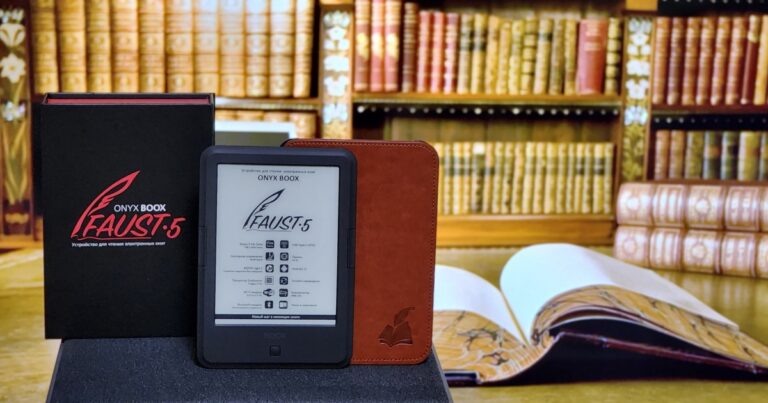Patent analysis of biological 3D printing in Russia

3D bioprinting, 3D bioprinting of biological objects, as well as biofabrication, as an independent area of development in the field of tissue engineering, began to form in the world in the early 1990s. Additive printing technology has become an alternative to the methods of prosthetics, implantation and transplantation widely used in medicine. Artificial organs and donor organs have drawbacks, and one of the main ones is the painful engraftment of foreign material alien to the human body. Transplantation of human organs from a donor is also accompanied by serious side effects, as a result of which the patient with a transplanted organ is forced to use pharmaceuticals for the rest of his life, which prevent the rejection of the transplanted organ. 3D bioprinting based on living cells of the patient eliminates this drawback.
For our analysis, the selection of security documents of the Russian Federation was carried out throughout the database of the Federal Institute of Industrial Property (FIPS) using the keywords “3D biological printing”, “3D bioprinter”, “additive biotechnology”, “bioink”, “3D tissue engineering” in the title of the document . It turned out that before 2015 there were no documents for the specified keywords at all, which says a lot. The dynamics by years is presented in Table 1.
Table 1: Dynamics of issuance of titles of protection in the Russian Federation
on bioprinting in 2015-2022, units
Document type | 2015 | 2016 | 2017 | 2018 | 2019 | 2020 | 2021 | 2022 | ∑ |
Patents for inventions | 2 | 1 | 3 | 1 | 1 | 2 | 3 | 3 | 16 |
Applications for inventions | – | – | – | – | – | 2 | 2 | 0 | 4 |
utility models | 0 | 0 | 0 | 0 | 0 | 1 | 0 | 0 | 1 |
Computer programs | 0 | 0 | 0 | 0 | 0 | 4 | 4 | 0 | 8 |
Database | 0 | 0 | 0 | 0 | 0 | 3 | 2 | 0 | 5 |
Total | 2 | 1 | 3 | 1 | 1 | 12 | 9 | 3 | 34 |
Note: applications for inventions only for 2020-2022 are taken into account.
Source: Author based on FIPS database
The figures, while reflecting the overall picture of indigenous copyrights, are not entirely accurate, as the keywords were not always indicated in the patent title; they could be mentioned or allowed as a possibility in one of the claims or in the examples of the invention on bioprinting.
Of the 34 documents selected for analysis, the majority were patents for inventions (16 pieces). In second place are computer programs (8 pieces). Databases and applications for inventions amounted to 4 and 5, respectively.
Foreigners own 6 invention patents and 2 invention applications.
The leader is the National Research Center for Radiology, which in general account for half of the protection documents.
Reference: The National Medical Research Center for Radiology of the Ministry of Health of Russia unites three institutions: MNII im. P.A. Herzen, MRRC im. A.F. Tsyba and Research Institute of Urology and Interventional Radiology named after N.A. Lopatkin. Bioprinting is carried out by the laboratory of biomaterials and tissue structures. The objectives of the laboratory are:
Optimization of the properties of biomaterials, including hydrogels, and the conditions for their use in biofabrication, including the bioprinting method.
Development of formulations of biomaterials (including bioink) that ensure high survival of incorporated cells, their further active proliferation and directed differentiation.
Modification of the formulations of biomaterials (including bioink) aimed at reducing inflammatory reactions during implantation of tissue-engineered structures in animals, increasing (or decreasing) the terms of biodegradation.
Development and improvement of methods for biofabrication of tissue structures with an internal structure and external geometry of high complexity using various types of 3D printing.
The extrusion bioprinter Rokit Invivo (Dr. INVIVO 4D2) operates in the laboratory, which provides biofabrication simultaneously with two biomaterials to choose from: 1) thermosensitive hydrogels; 2) hydrogels that polymerize under the action of ultraviolet (365 nm); 3) synthetic polymers in the form of filaments, extruded mechanically; 4) synthetic polymers in powder/granule form, pneumatically extrudable.
3D Bioprinting Solutions Private Institution has three patents for inventions (No. 2701330 jointly with Roskosmos, as well as No. 2746171 and No. 2749574). Zhuravlev Dmitry Andreevich received 2 patents as a private inventor. Moscow State Regional University, LLC “International Center for Medical Research and Development”, Federal Research Center “Crystallography and Photonics” and the Peoples’ Friendship University of Russia each own one patent for inventions.
US biotech companies own 5 invention patents, including 2 patents. from Organovo Inc. #2623303 and #2625016, one each from Aprecia Pharmaceutical Co. and Antrogenesis Corp. Rokit Healthcare Inc. (South Korea) filed 2 applications for inventions of the Russian Federation.
Thematic analysis shows that the inventions were focused around ways And substances, in particular, a method for creating tissue engineering structures by bioprinting with bioink for cartilage tissue regeneration, a composition of bioink for cartilage restoration. Several patents are dedicated devicessuch as a 3D printing system and kit.
The key factor in bioprinting is bioink, a biocompatible material that imitates the extracellular matrix with living cells of a particular person incorporated into it. It follows from the patents that bioink must meet a number of requirements, namely: be biocompatible for cells and tissues, mechanically strong and elastic, and have a controlled degradation rate. To meet all the requirements, bioink must include not only the main component, but also other components that ensure cell proliferation, differentiation and the functioning of the tissue structure as a whole.
Marginalia. important term — scaffold (English scaffold – scaffolding), that is, matrices for filling with cells and forming the target tissue of the human body.
The development of materials suitable for use as bioinks is a specialty of many patents. These materials should be suitable for both the printing process and the subsequent “maturation” of the scaffold with incorporated cells. For these purposes, a number of natural biomaterials have already been tested, including alginate, gelatin, collagen, hyaluronic acid (HA), silk fibroin, chitosan, and agarose. Synthetic materials such as polycaprolactone and polylactide are also used.
The main role of the biomaterial in tissue regeneration is to support the functioning of cells. Thus, scaffold materials must provide the transport of gases, nutrients, and regulatory factors in order to enable cell survival, proliferation, and differentiation. In addition, they must undergo biological degradation at a controlled rate, close to the rate of regeneration of the tissue being replaced, and be non-toxic and non-immunogenic. And, finally, they should serve not only as a support structure for cells, but also provide the mechanical strength of the tissue structure as a whole, make it possible to fix it in the implantation zone.
An ideal example of such a material is the natural extracellular matrix (ECM), the main properties of which should be imitated by artificial scaffolds. As is known, the ECM microenvironment provides not only physical support for cell adhesion, but also signals that regulate the life cycle, metabolism, and their differentiated state. The ECM is the main source and conductor of biochemical and biomechanical signals to ensure the organization and functioning of the tissue as a whole. ECM is a multicomponent system of matrix macromolecules, the composition and structure of which are specific for each type of tissue. The main components of ECM are fiber-forming proteins such as collagens, elastin, fibronectin, laminins, glycoproteins, proteoglycans, and glycosaminoglycans. In most tissues, the main fibril-forming component of the ECM is type I collagen, and in cartilage tissue, type II collagen.
According to experts, by 2050-2070. the maximum age of a person’s life can be increased to 150 years, by imprinting either blood vessels, patches on the heart, pieces of the liver, cartilage for the knees, or the corneas of the eyes. That’s just with brains, bioprinting is not yet possible, except perhaps for the hard shell.
We will keep an eye on this important industry and update regularly on progress.
About the service Online Patent
Online Patent is the number 1 digital system in the Rospatent rating. Since 2013, we have been creating unique LegalTech solutions for the protection and management of intellectual property. Register in the Online Patent service and get access to the following services:
Online registration of programs, patents for invention, trademarks, industrial design;
Submission of an application for inclusion in the register of domestic software;
Options for accelerated registration of services;
Free search in databases of patents, programs, trademarks;
Monitoring of new applications by criteria;
Online support of specialists.
For more articles, analytics from experts and useful information about intellectual property in Russia and the world, look at our Telegram channel.
Get a discount of 2000 rubles on your first order. More details in the pinned post.





